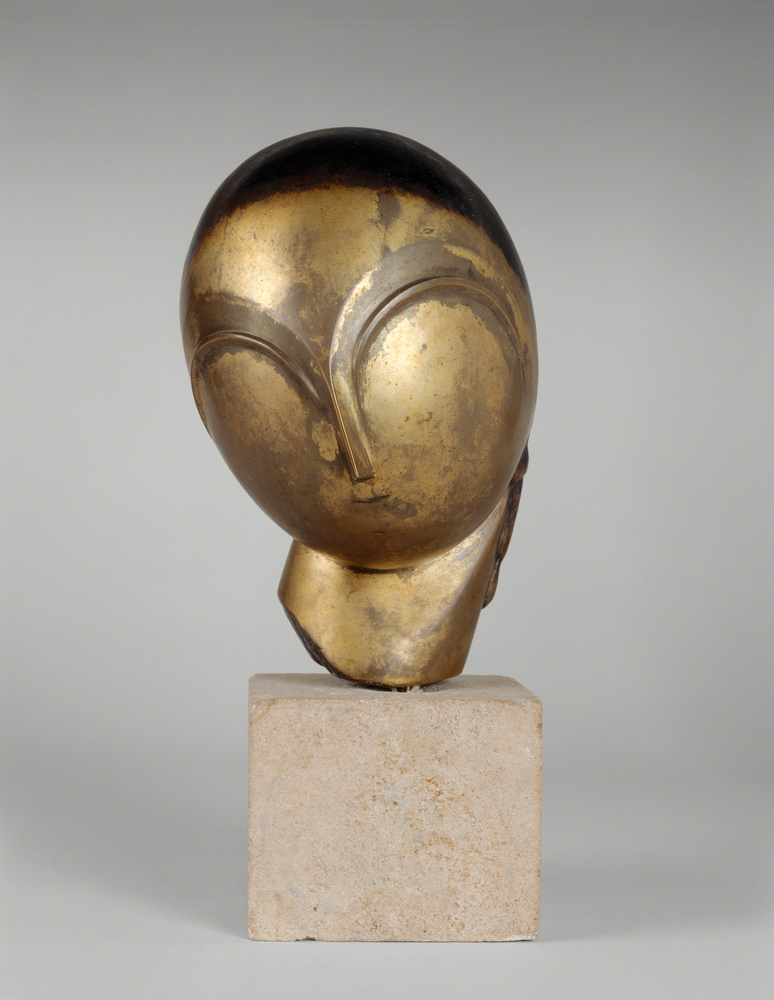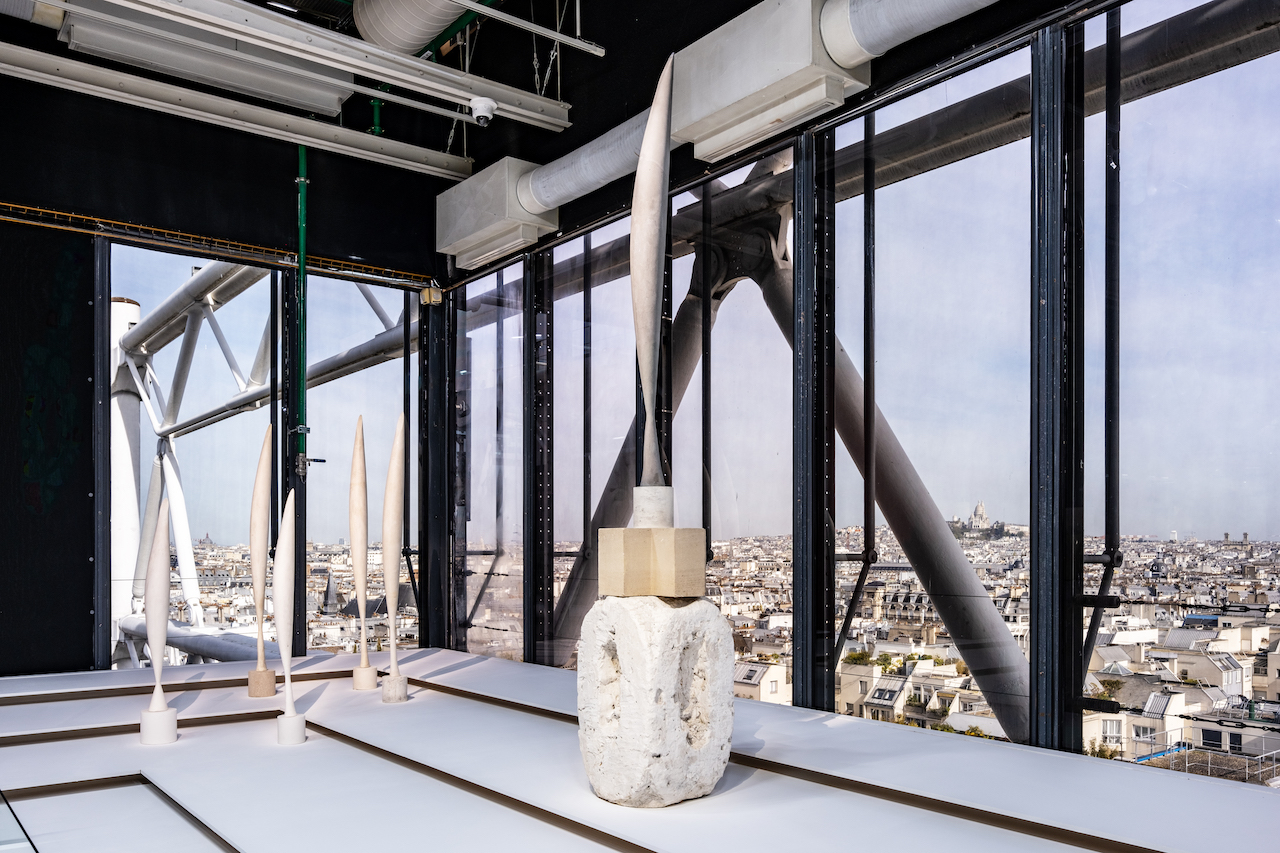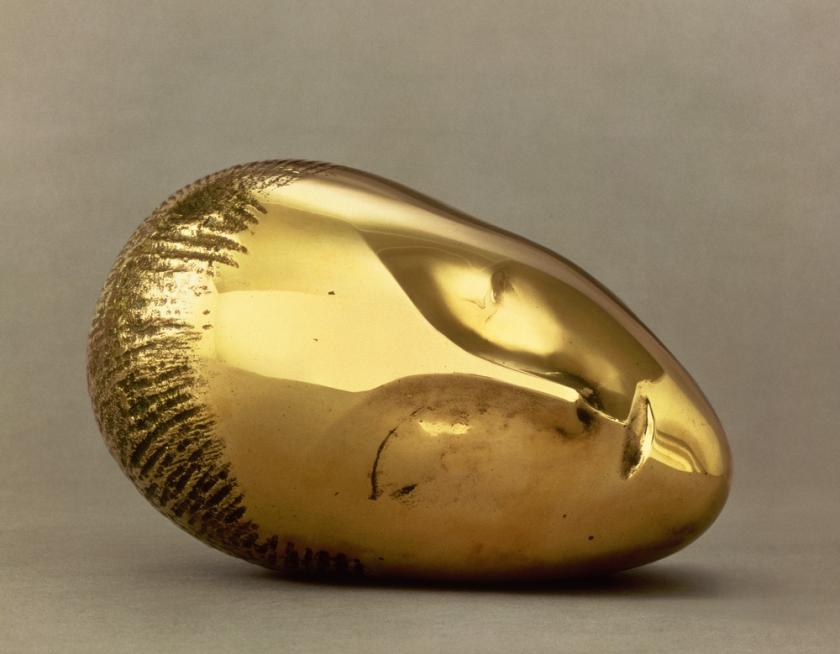One hundred and twenty sculptures, and so much more: the current Brancusi blockbuster at the Centre Pompidou, the first large Paris show of the Romanian-born sculptor’s work since 1995, provides an exhilarating and in many ways definitive perspective on one of the founding figures of 20th century modernism.
“Beaubourg”, as the great tourist attraction is known, will undergo major changes in 2025, including a new setting for Brancusi’s studio, which the artist gave to the French state, along with all his papers, sketches and studio contents, when he died in 1957. In the meantime, we are given a thrilling foretaste of things to come.
Not content to draw on the extensive archival at their disposal – sketches, letters, photographs and films – the curators have borrowed major works from around the world, including the Tate, MOMA, and New York Guggenheim. The exhibits chart the streams of influence that fed the artist’s work, from his childhood and youth in Romania, where the archaic forms and symbols of vernacular architecture, helped him develop a language in which form works as a vehicle for the transcendent, to elements mirrored in the Cycladic sculpture he first saw in the Louvre when arriving in Paris, the wooden carvings of Gauguin, African ritual sculpture, and the early experiments of Derain with cubism.
Juxtaposed with works by Rodin – who recognised Brancusi’s outstanding qualities as an artist and took him on briefly as an assistant, the almost theatrical setting of the young sculptor’s early work displays with breath-taking clarity his move from faithful evocation of the human body to something increasingly abstract. A series of children’s heads demonstrates the way in which the shift towards abstraction isn’t driven by intellect, but by something closer to a spiritual quest for essence. The same quest for pure form is evident in the many portraits included in the show – works that once again, seek and achieve a kind of authenticity that conventional portraiture, with its fine detail fails to produce. Perhaps most extraordinary is “Danaïde” (1919) (pictured above), a series of small bronzes displayed with a range of different patinas, all of them bewitching, the reduction to essentials of the model’s head and in its own way as wonder-full and breath-taking as the Cycladic statues that inspired the sculptor.
Perhaps most extraordinary is “Danaïde” (1919) (pictured above), a series of small bronzes displayed with a range of different patinas, all of them bewitching, the reduction to essentials of the model’s head and in its own way as wonder-full and breath-taking as the Cycladic statues that inspired the sculptor.
The refinement of form which we associate with Brancusi begins very early – before the outbreak of the First World War – an event who magnitude, terror and violence is often believed to have broken all previous modes of perceiving and evoking the world around us. There is a radical shift, perhaps only equalled in daring by the search for something that evokes immaterial reality in Russian constructivist painters of the same period.” The Sleeping Muse” (1910) offers a timeless vision, irreducible to words, of the power at the heart of inspiration.
At the heart of Brancusi’s work, and inseparable from his quest for essence, there’s an acknowledgment of the unity in all things, of a level of being that transcends polarities – stillness and movement, life and death, and perhaps most of all masculine and feminine. Familiar masterpieces such as “The Kiss” (1916) and “Princess X” (1915-1916) (pictured below), imbued with a powerful erotic touch, conjure a sense of primordial life – the mystery of the androgyne that calls from beyond the conventional dualities. “Princess X” – possesses the same magical ambiguity and mystical union as a Hindu Shiva Lingam or Yab-Yum, the Tibetan representation of male and female polarities united in sexual intercourse. The exhibition is imaginatively curated, offering a diversity of means with which to appreciate Brancusi’s universe: there are films and videos, several of which of the sculptor at work, and a space in which the music he listened to while he worked, with the sleeves of vinyl recordings ranging from Satie to Louis Armstrong, Asian music to the Latin American folk-pop of Los Guaranis.
The exhibition is imaginatively curated, offering a diversity of means with which to appreciate Brancusi’s universe: there are films and videos, several of which of the sculptor at work, and a space in which the music he listened to while he worked, with the sleeves of vinyl recordings ranging from Satie to Louis Armstrong, Asian music to the Latin American folk-pop of Los Guaranis.
There is an engagingly didactic feel to the show – it never strays far from the work’s spiritual core. There is one space dedicated to the emblematic “Bird in Flight”: a whole fleet of them, in white plaster and in bronze. The largest, gleaming gold and reflecting the light so it comes alive is displayed against a bright red background, as Brancusi had done in his studio. Brancusi was never too keen on showing his work in galleries and museums. He preferred for people to visit his studio, where he had total control over the way in which the pieces were placed. The plinths, in wood, plaster and stone, sculptural objects in themselves, are an integral part of the choreography of form and space that he sought. What would he have made of this section of the show, with the elegant pieces reaching skywards (pictured above) lined up in from of the building’s exterior glass wall, beyond which the skyline of north-eastern Paris is dramatically revealed? At first the effect is surprising: the original idea for the centre feels vindicated– the revolutionary and very playful architecture of Renzo Piano and Richard Rogers– a museum without walls, the works not just isolated within, but accessible to the world. And yet, this theatrical effect, a political gesture at the outset, partly robs these essentially spiritual sculptures of their power. The opposite effect is achieved in the adjoining space, where "Leda" (1926), Brancusi’s minimalist evocation of a swan, a highly polished bronze, turns slowly in a darkened room, delicately lit so that bursts of reflection bring the piece to life.
Brancusi was never too keen on showing his work in galleries and museums. He preferred for people to visit his studio, where he had total control over the way in which the pieces were placed. The plinths, in wood, plaster and stone, sculptural objects in themselves, are an integral part of the choreography of form and space that he sought. What would he have made of this section of the show, with the elegant pieces reaching skywards (pictured above) lined up in from of the building’s exterior glass wall, beyond which the skyline of north-eastern Paris is dramatically revealed? At first the effect is surprising: the original idea for the centre feels vindicated– the revolutionary and very playful architecture of Renzo Piano and Richard Rogers– a museum without walls, the works not just isolated within, but accessible to the world. And yet, this theatrical effect, a political gesture at the outset, partly robs these essentially spiritual sculptures of their power. The opposite effect is achieved in the adjoining space, where "Leda" (1926), Brancusi’s minimalist evocation of a swan, a highly polished bronze, turns slowly in a darkened room, delicately lit so that bursts of reflection bring the piece to life.
Brancusi’s architectural ambitions – he never forgot the traditional farm buildings of his native Romania, buildings in which the magical in human experience was evoked in talismanic carvings and decorations – are reflected in the columns he returned to over and over, pillars imagined as holding up the sky, but also reaching out towards the infinite. These totemic carvings, part of the ceremonial grouping he created in Târgu Jiu in the late 1930s, have something in common with the great megaliths at Stonehenge, Avebury or Callanish, grandiose ensembles of objects that link humanity to the sacred, the culmination in many ways of this most spiritual of sculptor’s transcendent work.









![SEX MONEY RACE RELIGION [2016] by Gilbert and George. Installation shot of Gilbert & George 21ST CENTURY PICTURES Hayward Gallery](/sites/default/files/styles/thumbnail_125_x_125_/public/mastimages/Gilbert%20%26%20George_%2021ST%20CENTURY%20PICTURES.%20SEX%20MONEY%20RACE%20RELIGION%20%5B2016%5D.%20Photo_%20Mark%20Blower.%20Courtesy%20of%20the%20Gilbert%20%26%20George%20and%20the%20Hayward%20Gallery._0.jpg?itok=3oW-Y84i)





Add comment